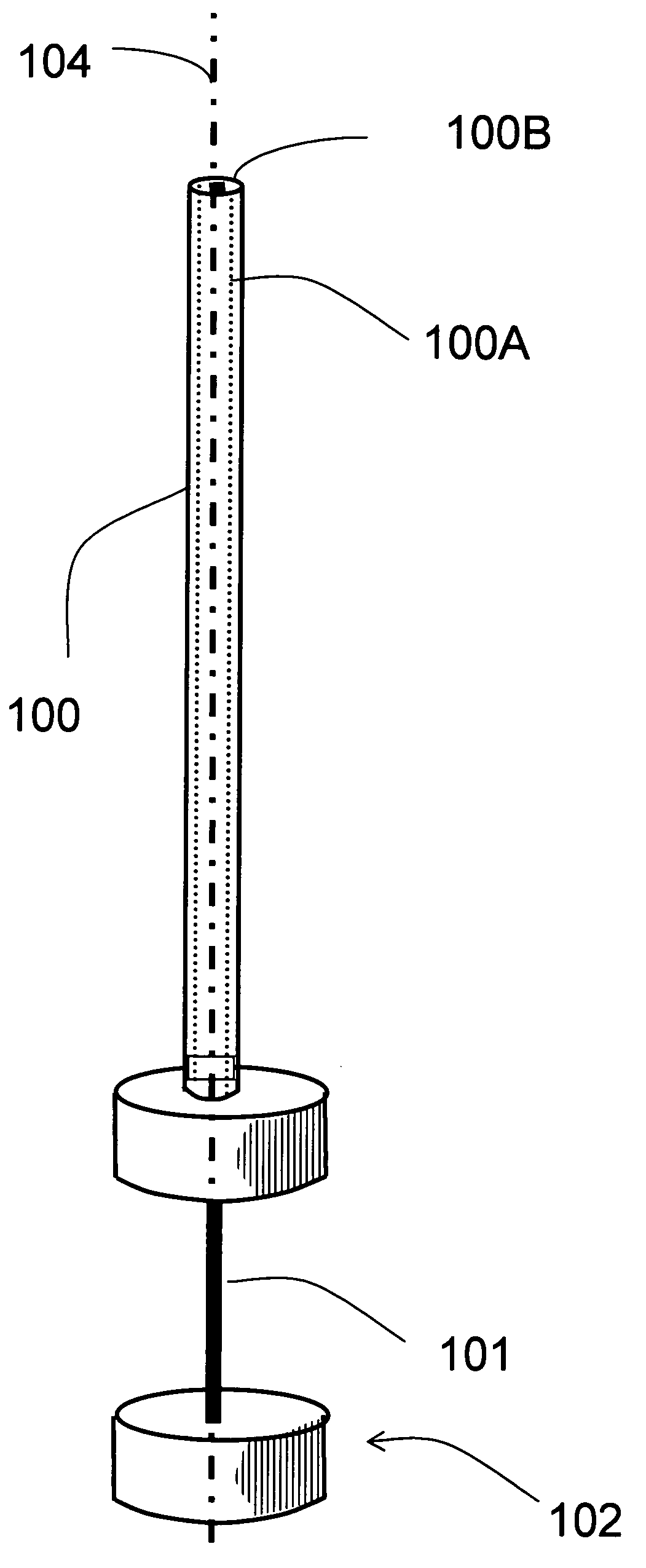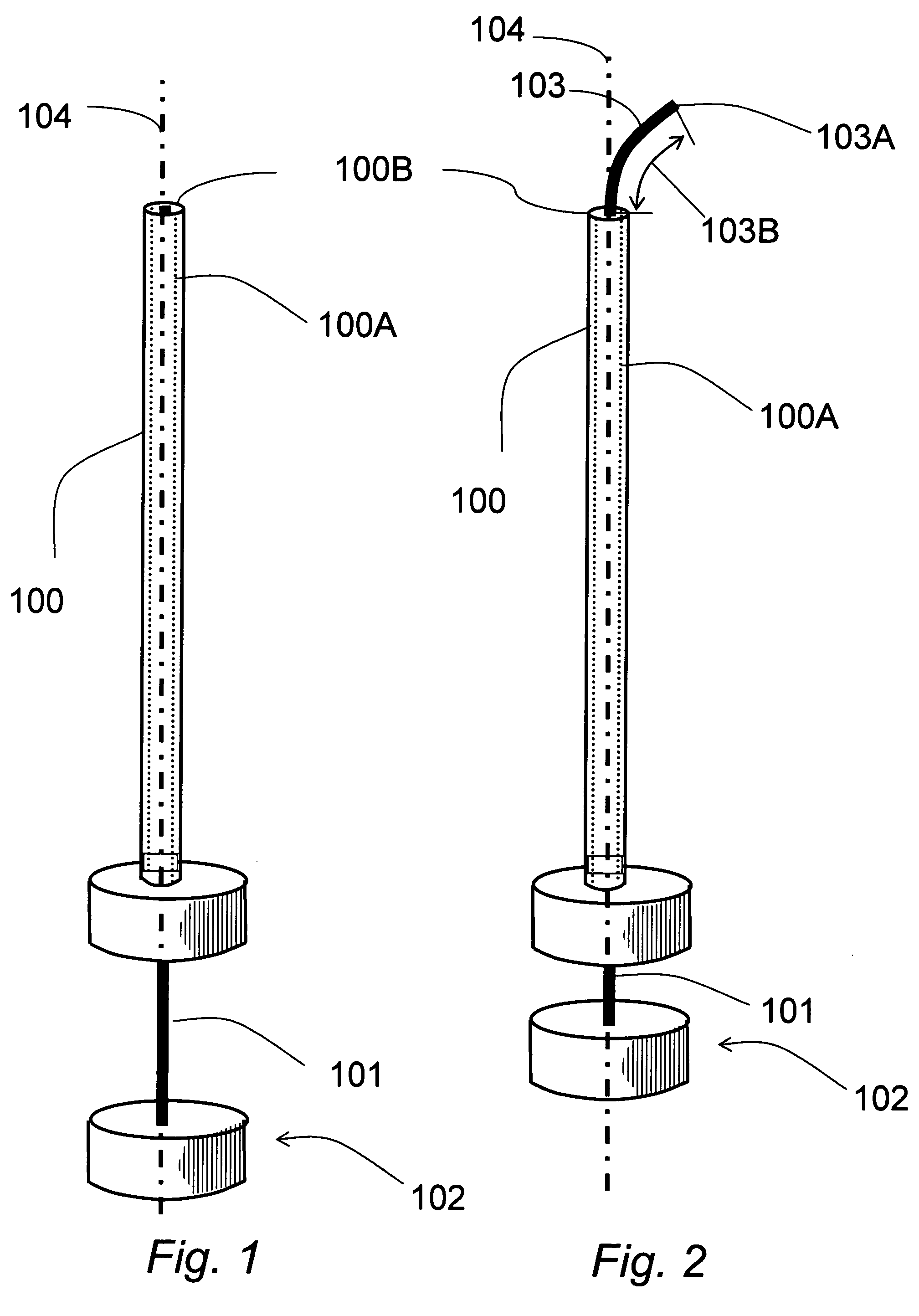Steerable needle
a needle and steering technology, applied in the field of improved needles, can solve the problems of limited control available to the operator, limiting the success of minimally invasive surgery, missed target and need for a second insertion, etc., and achieve the effect of improving the guidance level of the operator
- Summary
- Abstract
- Description
- Claims
- Application Information
AI Technical Summary
Benefits of technology
Problems solved by technology
Method used
Image
Examples
Embodiment Construction
Basic Needle Structure
[0056]As shown in FIGS. 1 and 2, the needle 102 consists of two parts, namely, a cannula 100 having a hollow core 100A and a stylet 101 received within the hollow core 100A. The tubular or hollow cannula 100 in its natural unconstrained state is straight i.e. has a straight main or longitudinal axis 104. The stylet 101 is preferably a solid cylindrical element that may be inserted into the hollow core 100A of the cannula 100. The stylet 101 has a curved portion 103 adjacent to its free or leading end 103A that has a defined curvature in its natural unconstrained state. This curvature is preferably a smooth curve to allow the stylet to be easily extended into tissue and minimize tissue damage.
[0057]Typically, this curved end portion 103 of the stylet 101 extends from the free end or tip 103A up to about 2 centimeters (cm) and normally will have a curvature having a radius as small as 0.2 cm. Obviously the specific curvature and length of the curved portion 103 w...
PUM
 Login to View More
Login to View More Abstract
Description
Claims
Application Information
 Login to View More
Login to View More - R&D
- Intellectual Property
- Life Sciences
- Materials
- Tech Scout
- Unparalleled Data Quality
- Higher Quality Content
- 60% Fewer Hallucinations
Browse by: Latest US Patents, China's latest patents, Technical Efficacy Thesaurus, Application Domain, Technology Topic, Popular Technical Reports.
© 2025 PatSnap. All rights reserved.Legal|Privacy policy|Modern Slavery Act Transparency Statement|Sitemap|About US| Contact US: help@patsnap.com



